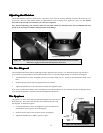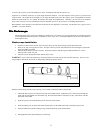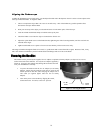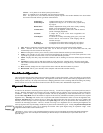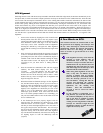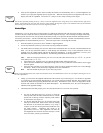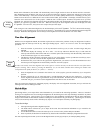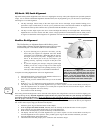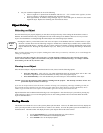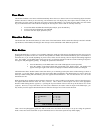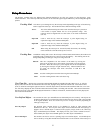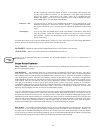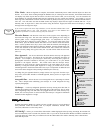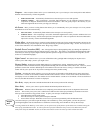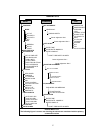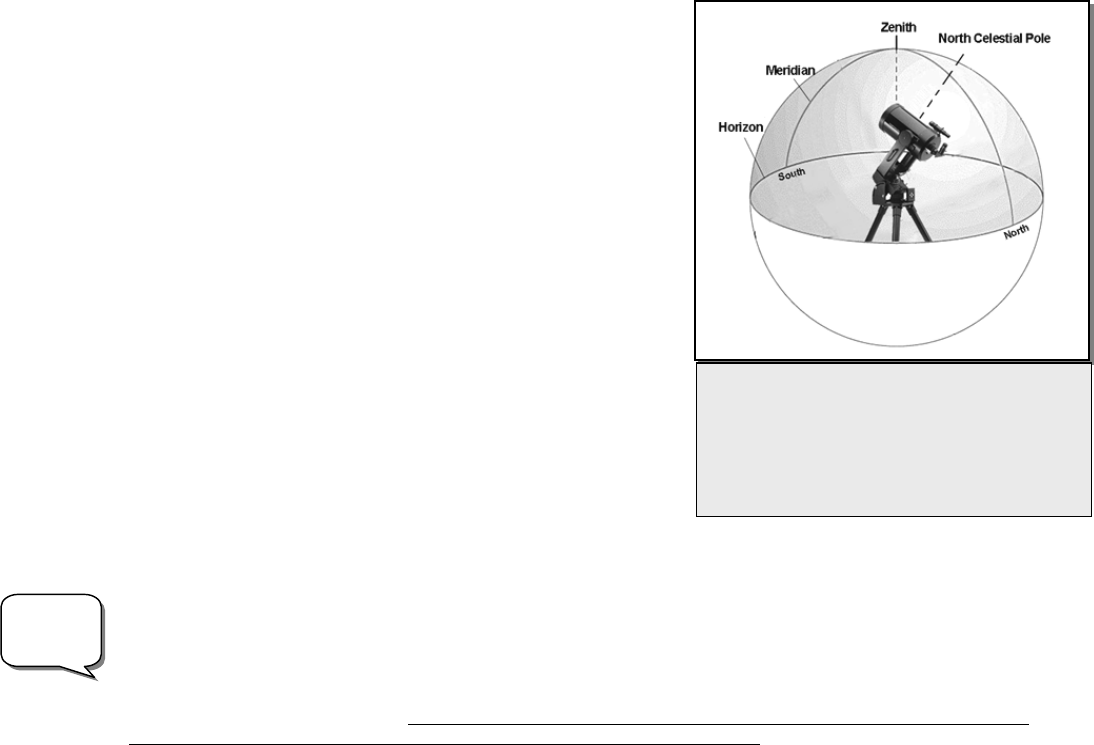
20
E
E
Q
Q
N
N
o
o
r
r
t
t
h
h
/
/
E
E
Q
Q
S
S
o
o
u
u
t
t
h
h
A
A
l
l
i
i
g
g
n
n
m
m
e
e
n
n
t
t
EQ North and EQ South Alignments assist the user in aligning the telescope when polar aligned on an optional equatorial
wedge. Just as with the Altazimuth alignments described earlier, the EQ alignments gives you the choice of performing an
AutoAlign or a Two-Star alignment.
• The EQ AutoAlign follows many of the same steps as the Alt-Az AutoAlign, except instead of asking you to
position the scope towards north, it will ask you to position the tube so that the index markers are aligned, and
then rotate the telescope base until the tube is pointed towards the Meridian (see figure 4-3).
• The EQ Two-Star Align requires the user to locate and align the telescope on two bright stars. When selecting
alignment stars it is best to choose stars that, a) have a large separation in azimuth and b) both are either positive
or negative in declination. Following these two guidelines will result in a more accurate EQ Two-Star alignment.
N
N
e
e
x
x
S
S
t
t
a
a
r
r
R
R
e
e
-
-
A
A
l
l
i
i
g
g
n
n
m
m
e
e
n
n
t
t
The NexStar has a re-alignment feature which allows you to
replace either of the two original alignment stars with a new star
or celestial object. This can be useful in several situations:
• If you are observing over a period of a few hours, you may
notice that your original two alignment stars have drifted
towards the west considerably. (Remember that the stars are
moving at a rate of 15º every hour). Aligning on a new star
that is in the eastern part of the sky will improve your
pointing accuracy, especially on objects in that part of the
sky.
• If you have aligned your telescope using the Quick-Align
method, you can use re-align to align to two actual objects
in the sky. This will improve the pointing accuracy of your
telescope without having to re-enter addition information.
To replace an existing alignment star with a new alignment star:
1. Select the desired star (or object) from the database and slew to it.
2. Carefully center the object in the eyepiece.
3. Once centered, press the UNDO button until you are at the main
menu.
4. With NexStar GPS displayed, press the ALIGN key on the hand control.
5. The display will then ask you which alignment star you want to replace. Use the UP and Down scroll keys to
select the alignment star to be replaced. It is usually best to replace the star closest to the new object. This will
space out your alignment stars across the sky.
6. Press ALIGN to make the change.
Since many planets and bright stars can be observed in the daytime, the realign feature can also be useful for aligning your
telescope during the day. Daytime alignments require the use of a proper solar filter for your telescope (see Optional
Accessories section of the manual). Never look directly at the sun with the naked eye or with a telescope (unless you
have the proper solar filter). Permanent and irreversible eye damage may result. In order to align the NexStar in the
daytime, you will need to perform a Quick Align as described earlier in this section and then use the Sun as your alignment
star. Follow these steps to align your NexStar in the daytime:
1. Perform a Quick Align as discussed earlier in this chapter.
2. With the proper solar filter attached, manually move the telescope to the Sun and center it in the eyepiece.
3. Once centered, press the UNDO button until you are at the main menu.
4. With NexStar GPS displayed, press the ALIGN key on the hand control
5. The display will then ask you which alignment star you want to replace. Use the UP and Down scroll keys to
select the alignment star to be replaced. Since you did a Quick-Align it does not matter which star you select.
6. Press the ZERO button on the hand control.
7. The hand control will then prompt you to "Center the Sun" and "Press Align"
Figure 4-3
The Meridian is an imaginary line in the sky that
starts at the North celestial pole and ends a
t
the South celestial pole and passes through the
zenith. If you are facing South, the meridian
starts from your Southern horizon and passes
directly overhead to the North celestial pole.
Daytime
O
bserving
Tip!



